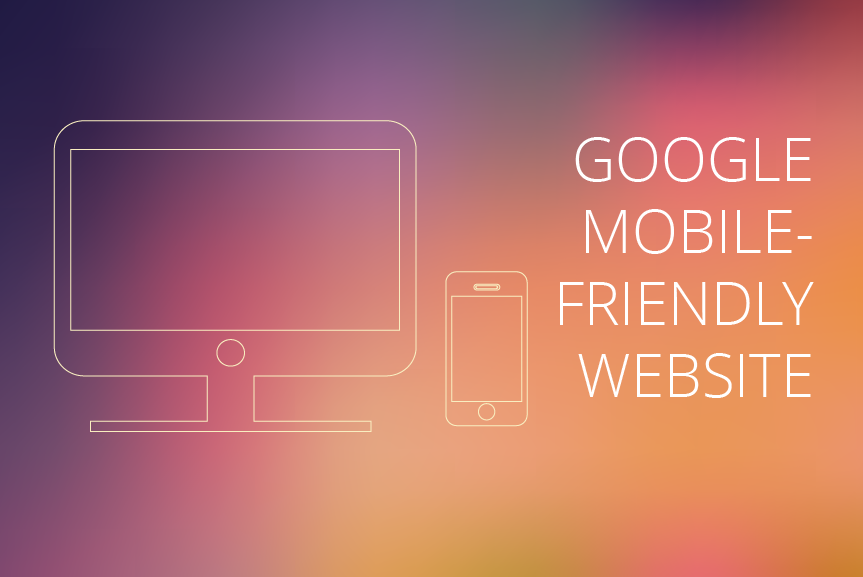Embed code for Infographics:
<a href="//internetdevels.com/blog/google-mobile-friendly-website" title="google mobile friendly website" target="_blank"><img src="https://store.internetdevels.com/i/c358a611b6/800x2326-google_mobile-friendly_website.jpg" alt="google mobile friendly website"/></a>
Having told you about UX design for mobile, we have now chosen another interesting topic and that is Google mobile-friendly website. Let's go! :)
Google developers claim that they must deliver and render the above-the-fold content in under one second, which allows the user to begin interacting with the page as soon as possible. This is the case not only with desktop, but also with mobile website development. People are almost inseparable with their smartphones, and they expect to find almost everything on the web, consequently web designers are doing the whole bag of tricks for their customers to be happy and contented.
Is Your Website Really Mobile-Friendly?
To make sure, whether your website is mobile friendly or not, use the Google's Mobile-Friendly Test, a special Google tool. It verifies optimization for mobile devices by running a test and analyzing a URL in order to inform you how mobile-friendly this page really is. For testing your website you can also try a couple of alternatives: Google's PageSpeed Insights, Keynote MITE, BrowserStack, W3C's MobileOK Checker.
CMS Suggestions
If you are interested in creating an entirely new site from scratch, you will need the so called ”software packages” or content management systems (CMS). Google gives you some recommendations concerning CMSs. There are lots of them, so it is better to make certain whether your CMS is on the list of suggested recommendations. The most popular CMSs supported by Google are Drupal, WordPress, Joomla, Blogger, Bitrix, Google Sites and others. Double check if your choice is right!
Speed & Loading
Page loading time is now one of the most crucial factors when it comes to mobile website development. A user should be engaged with the page and gain the excellent experience, disregarding the type of device or network. The average smart phone visitor expects your website to load within 3 seconds. 75% of all Internet users wouldn’t revisit a website that doesn’t manage to load within 4 seconds.
Flash Shouldn’t Be Used
The content containing flash is not considered to be mobile-friendly. Using multiple HTML 5 tools and various animations is not typical of mobile-friendly websites. Some scripts do not work on mobile, so, it’s better to scan everything to ensure that you haven’t used any of those types.
Image Optimization
As we have mentioned above, try to avert anything that takes a long time to load. One of the best solutions ever is to optimize your images. Pictures occupy a lot of visual space and, additionally, download heavily. Optimized images will give you huge byte savings and greater website performance. When a browser downloads fewer bytes, users are able to see the content on a screen much faster.
JavaScripts, CSS Files
Avoid sophisticated scripts and inefficient code, as they tend to take lots of milliseconds to execute. Google offers Chrome Developer Tools, built-in developer tools in the browser to optimize your code. One more important instrument is the Googlebot, a device which allows indexing and retrieving JavaScript and CSS files. Let Googlebot do its job, and don’t block these files.
Standard Fonts
Some web designers are concerned about website “external appearance” more than its inner functionality. For instance, choosing fancy fonts may lead to very long page loading time, so try to use standard ones. Arial, Tahoma, Verdana, Georgia, Impact, Trebuchet MS are both safe and mainstream.
Separate URLs
Separate URLs help to maintain different code to desktop and mobile devices, or tablets. As a result, if you have a “desktop” URL, you will have an equivalent for a mobile version. You just have to make some appropriate configurations, and URL for the desktop and mobile will look like “www.webpage.com” and “m.webpage.com”, respectively.
Mobile-Centric 404s
Make sure that pages of the website open perfectly on both desktop and mobile, and desktop pages don't show a mobile error page.
Final Thoughts
Considering the above-mentioned, it becomes obvious that all these steps are pretty applicable. If you want your website to be identified by Google as mobile-friendly, try to stick to these requirements. Verify your website with the help of Google tools and make modifications if necessary. If you need some help concerning all these questions, you may address any website support & maintenance services, and they will surely find the way to help you!

